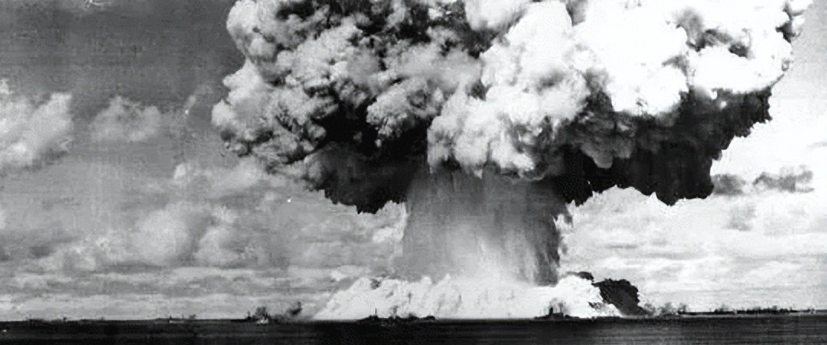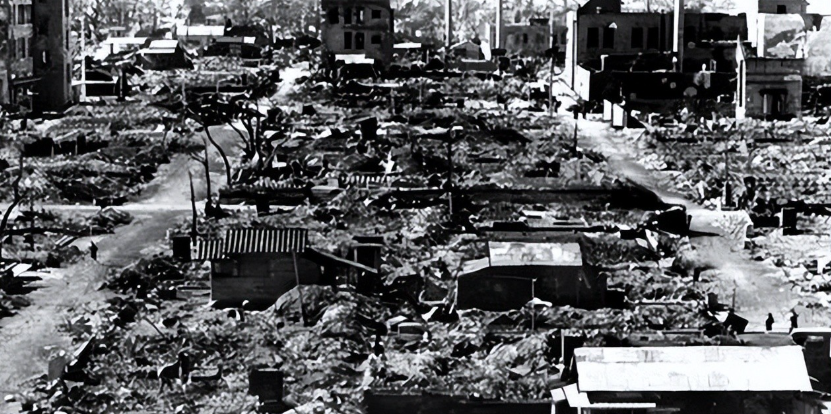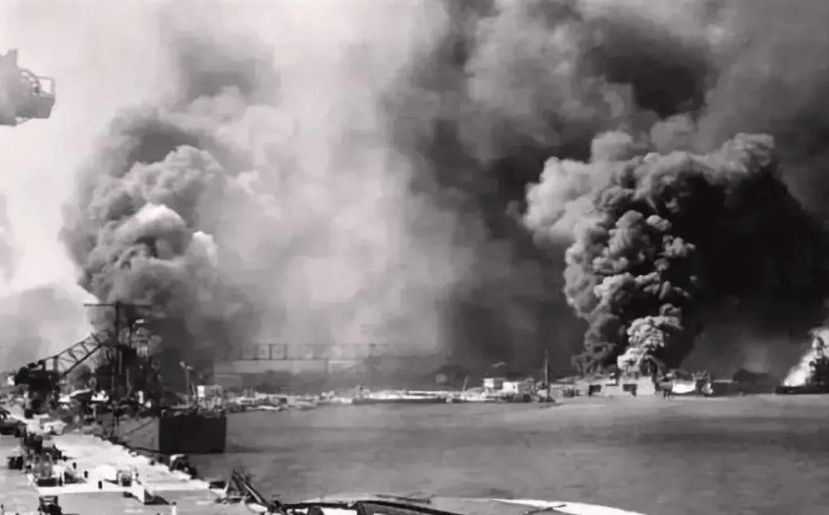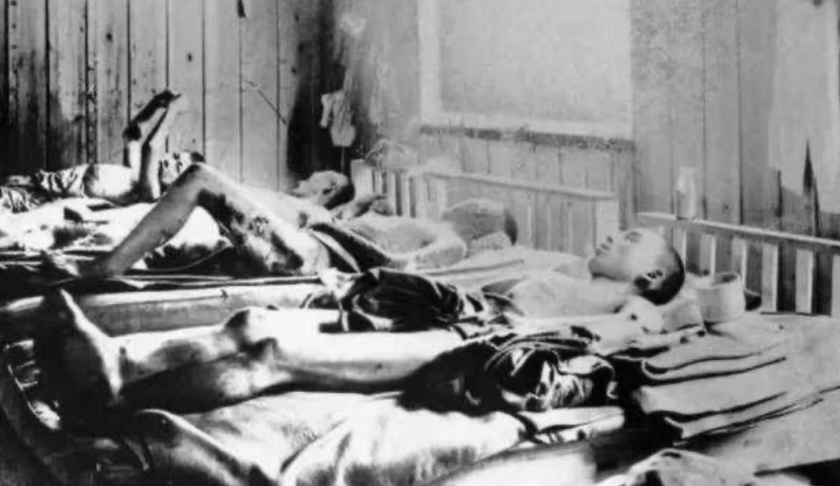World War II was a conflict of unprecedented scale, with nations pushing the boundaries of military technology. Among the deadliest innovations was the atomic bomb—an invention that would forever alter the course of history. When the United States dropped atomic bombs on Hiroshima and Nagasaki in August 1945, the world witnessed destruction on an unimaginable level. Today, we explore the aftermath through a collection of haunting photographs that captured the immediate and long-term consequences of these devastating explosions.

Faith vs. Reality: A Fallen Statue in a Ruined City
Religious belief has always played a significant role in human civilization, providing comfort in times of hardship. However, one striking image from post-bomb Hiroshima shows a fallen Buddhist statue surrounded by rubble. In the face of nuclear destruction, even sacred symbols stood powerless. The image serves as a stark reminder that faith alone could not shield humanity from the horrors of war.

A Lone Survivor Among the Ruins
Another powerful photograph features a young man standing amid the devastation, gazing at a partially collapsed building. Was this structure built with special materials? Or was it simply outside the bomb’s most destructive radius? Regardless, the contrast between standing structures and the surrounding debris highlights the unpredictable nature of atomic explosions.
Clinging to Life: The Wounded and the Homeless
For those who survived, life after the bomb was a struggle for survival. One harrowing image shows a man who lost an arm in the explosion, yet he continues to contribute to rebuilding efforts. Others depict survivors resting on makeshift carts, exhausted from the overwhelming task of clearing debris. The resilience of these individuals is a testament to human endurance, even in the face of unspeakable tragedy.
A City Reduced to Ashes
Before August 6, 1945, Hiroshima was a thriving city with busy streets, lined with trees and traditional Japanese homes. Aerial photographs from before and after the bombing reveal a chilling transformation—what was once a bustling metropolis became a barren wasteland, with only a handful of skeletal buildings left standing. The contrast is a visual representation of the bomb’s sheer destructive power.
The Iconic Mushroom Cloud
Perhaps the most famous image of the atomic bombings is the towering mushroom cloud, captured from a distance. This massive plume of smoke and fire was visible for miles, marking the moment humanity crossed into the nuclear age. For those far enough away, the initial experience may have been limited to an earth-shaking boom and a blast of hot wind. For those closer, survival was often not an option.

Survivors in Makeshift Hospitals
Post-bomb photographs also document the immediate medical crisis. Survivors, suffering from severe burns and radiation sickness, lay on hospital beds in overcrowded emergency centers. With limited medical supplies and an overwhelming number of casualties, doctors and nurses faced impossible challenges. Many patients lay motionless, too weak to even wipe away the blood and ash covering their bodies.

Twisted Steel and Warped Buildings
One particularly haunting photograph captures steel structures that had been warped by the intense heat of the explosion. Normally rigid and strong, these beams look as if they had been twisted like paper. This level of destruction speaks to the bomb’s intense energy, which reached temperatures hotter than the surface of the sun.
Orphans and the Loss of Innocence
Children were among the hardest-hit victims. In the aftermath, many lost their parents and found themselves living in temporary shelters. Photographs show young orphans huddled around makeshift fires, trying to stay warm. Some images depict children wrapped in bandages, their faces scarred by burns. The psychological trauma they endured would last a lifetime.
Moving Forward: Rebuilding Amidst the Ruins
Despite the devastation, life went on. Some images show survivors gathering to rebuild their communities, offering support to one another. Others depict civilians receiving medical aid from soldiers and volunteers. Slowly, Hiroshima and Nagasaki began the long process of recovery.
Legacy and Lessons Learned
The atomic bombings of Hiroshima and Nagasaki were among the darkest moments in human history. They showcased the terrifying power of nuclear weapons and the need for global peace efforts. Today, both cities stand as symbols of resilience and peace, with memorials dedicated to those who lost their lives. The images from that time serve as powerful reminders of the cost of war and the importance of striving for a world without nuclear conflict.

No comments yet.